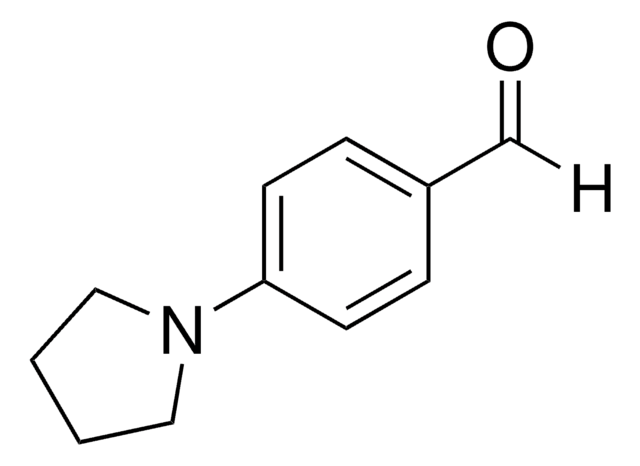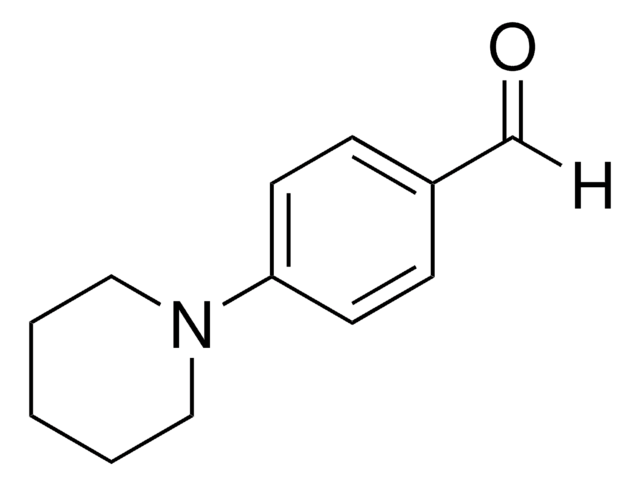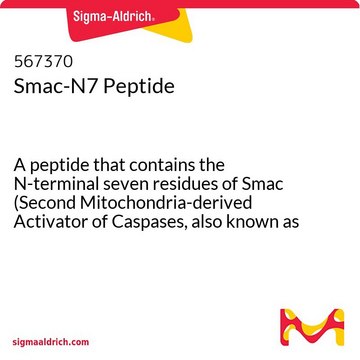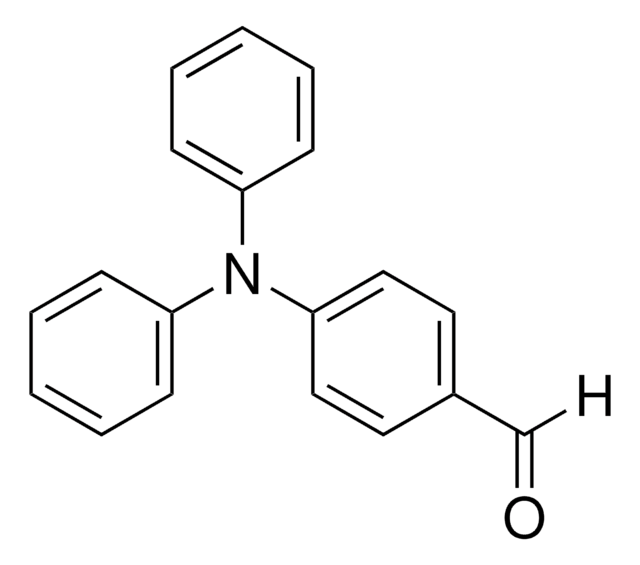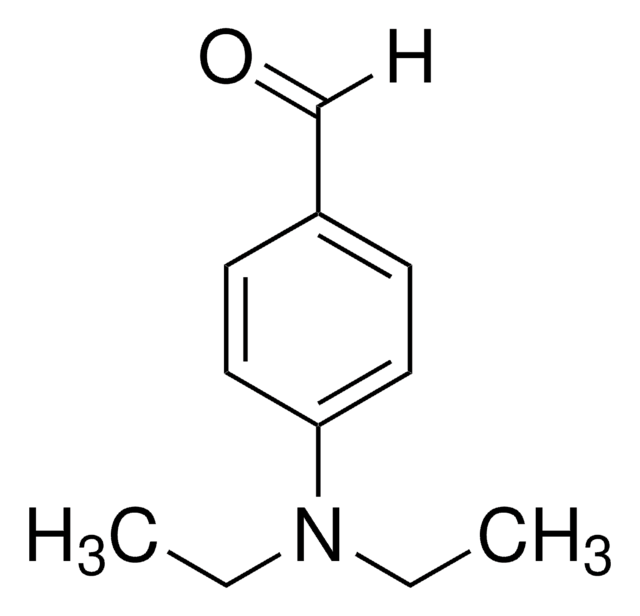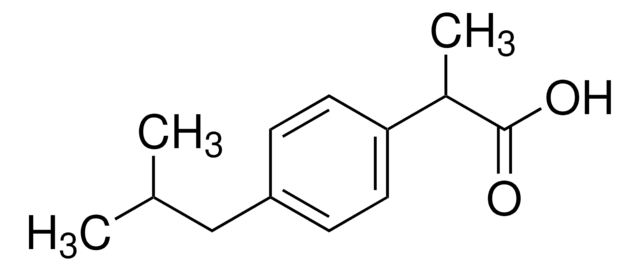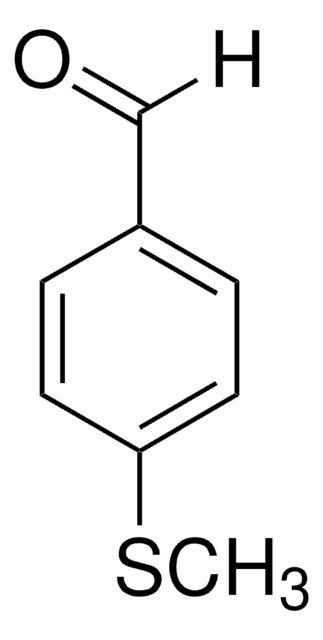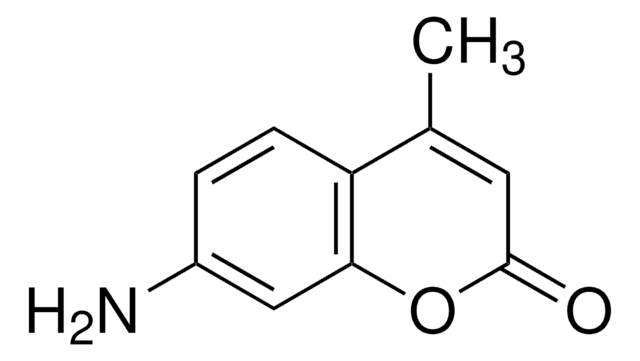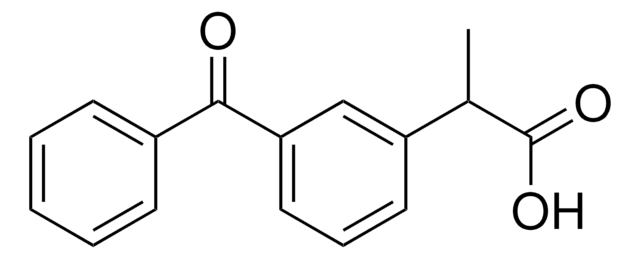678813
4-(4-Morpholinyl)benzaldehyde
97%
Synonym(s):
4-Morpholinobenzaldehyde, N-(4-formylphenyl)morpholine
Sign Into View Organizational & Contract Pricing
All Photos(1)
About This Item
Empirical Formula (Hill Notation):
C11H13NO2
CAS Number:
Molecular Weight:
191.23
MDL number:
UNSPSC Code:
12352100
PubChem Substance ID:
NACRES:
NA.22
Recommended Products
Quality Level
Assay
97%
form
solid
mp
65-69 °C
functional group
aldehyde
ether
SMILES string
[H]C(=O)c1ccc(cc1)N2CCOCC2
InChI
1S/C11H13NO2/c13-9-10-1-3-11(4-2-10)12-5-7-14-8-6-12/h1-4,9H,5-8H2
InChI key
FOAQOAXQMISINY-UHFFFAOYSA-N
Related Categories
Storage Class Code
11 - Combustible Solids
WGK
WGK 3
Flash Point(F)
Not applicable
Flash Point(C)
Not applicable
Regulatory Information
新产品
Choose from one of the most recent versions:
Already Own This Product?
Find documentation for the products that you have recently purchased in the Document Library.
Murugesan Sankarganesh et al.
Journal of biomolecular structure & dynamics, 39(3), 1055-1067 (2020-02-11)
New monometallic platinum complex ([PtL2Cl2]Cl2) of pyrimidine and morpholine derivative ligand were synthesized and structurally elucidated by elemental analysis, molar conductance, 1H NMR, FT-IR, ESI-MS and UV-Visible spectroscopic techniques. Analytical and spectroscopic result suggests that platinum complex has octahedral geometry.
Ravi Kumar Vuradi et al.
Journal of fluorescence, 26(2), 689-701 (2015-12-29)
New three ruthenium (II) polypyridyl complexes [Ru(phen)2mpip](2+)(1) {mpip = 2-(4-morpholinophenyl)-1H-imidazo[4,5-f][1,10]phenanthroline}, (phen = 1,10-Phenanthrolene), [Ru(bpy)2mpip](2+)(2) (bpy = 2,2'bipyridyl), [Ru(dmb)2mpip](2+)(3) (dmb = 4, 4-dimethyl 2, 2'-bipyridine) have been synthesized and characterized by spectral studies IR, UV-vis, (1)H, (13)C-NMR, mass and elemental analysis. The binding properties of these three complexes towards
Siyang Ding et al.
Molecules (Basel, Switzerland), 25(1) (2019-12-22)
Fluorescent dyes, especially those emitting in the long wavelength region, are excellent candidates in the area of bioassay and bioimaging. In this work, we report a series of simple organic fluorescent dyes consisting of electron-donating aniline groups and electron-withdrawing barbituric
Our team of scientists has experience in all areas of research including Life Science, Material Science, Chemical Synthesis, Chromatography, Analytical and many others.
Contact Technical Service